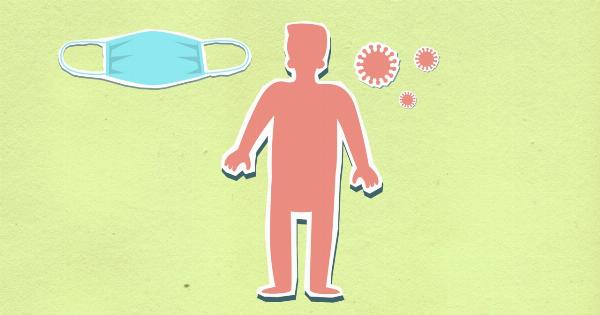Respiratory infections, also known as respiratory tract infections or RTIs, are a common health concern affecting millions of people worldwide.
The respiratory system, consisting of the nose, throat, trachea, and lungs, is particularly susceptible to infections caused by viruses, bacteria, or fungi. These infections can lead to a range of symptoms, from mild discomfort to severe illness, and are often influenced by seasonal patterns.
Understanding the impact of seasonal variations on respiratory infections is crucial for prevention, timely diagnosis, and effective management of such conditions.
1. Seasonal Changes and Respiratory Infections
Research has shown a clear association between seasonal changes and respiratory infections. The incidence of these infections tends to fluctuate based on temperature, humidity, and other environmental factors that vary throughout the year.
In many parts of the world, respiratory infections are more common during certain seasons, such as winter or rainy seasons.
2. Winter and Respiratory Infections
Winter is often considered a peak time for respiratory infections. There are several reasons why these infections are more prevalent during colder months.
Firstly, low temperatures can negatively impact the immune system, making individuals more susceptible to infections. Cold weather also promotes close contact among people, facilitating the spread of respiratory pathogens. Additionally, indoor environments, with less ventilation and higher exposure to others, increase the risk of transmission.
3. Seasonal Influenza
Influenza, commonly known as the flu, is a highly contagious respiratory infection that demonstrates a pronounced seasonal pattern. In temperate regions, flu outbreaks tend to occur during the winter months.
This correlation between seasonal changes and influenza incidence is believed to result from the virus’s stability in cold temperatures and low humidity. The flu virus can survive longer in the air and on surfaces, making it easier to transmit during winter.
4. Respiratory Syncytial Virus (RSV)
Respiratory syncytial virus (RSV) is a common cause of respiratory infections, especially in infants and young children. RSV infections are more prevalent during the winter months, similar to influenza.
Cold weather conditions contribute to the virus’s stability outside the human body, leading to increased transmission. The seasonality of RSV infections emphasizes the importance of vaccinations and preventive measures to protect vulnerable populations.
5. Allergies and Seasonal Variations
Allergic rhinitis, commonly known as hay fever, is an example of a respiratory condition strongly influenced by seasonal patterns.
Certain allergens, such as pollen, are more abundant during specific seasons, triggering allergic reactions in susceptible individuals. These reactions often manifest as respiratory symptoms like sneezing, congestion, and sinus inflammation. Understanding the seasonal patterns of allergens can help individuals manage their allergies and minimize symptoms.
6. Air Pollution and Respiratory Infections
Air pollution is another factor that can impact respiratory infections and their seasonality. High levels of air pollutants, such as particulate matter and nitrogen dioxide, can irritate the respiratory system and impair lung function.
Exposure to pollutants can weaken the immune system, making individuals more vulnerable to respiratory infections. Additionally, certain regions may experience higher pollution levels during specific seasons, further exacerbating the risk.
7. Precautions and Preventive Measures
Understanding the influence of seasonal patterns on respiratory infections allows for the implementation of precautionary measures. Here are some strategies to minimize the risk of respiratory infections during different seasons:.
- Hand Hygiene: Regularly washing hands with soap and water or using hand sanitizers can reduce the transmission of respiratory pathogens.
- Vaccinations: Ensuring up-to-date vaccinations, including influenza and pneumococcal vaccines, can provide protection against specific respiratory infections.
- Avoiding Crowded Places: During peak seasons for respiratory infections, it is advisable to avoid crowded places, especially if proper ventilation is lacking.
- Indoor Air Quality: Maintaining good indoor air quality through proper ventilation, air filtration systems, and avoiding exposure to smoke or other pollutants can help reduce the risk of respiratory infections.
- Seasonal Allergies: Individuals with seasonal allergies should monitor pollen forecasts and take necessary precautions, such as wearing masks or staying indoors during high pollen counts.
- Personal Protection: Wearing masks, especially in situations where respiratory infections are prevalent, can act as a physical barrier against respiratory pathogens.
8. Timely Diagnosis and Treatment
Early diagnosis of respiratory infections is crucial to prevent complications and efficiently manage the condition. If respiratory symptoms persist or worsen, seeking medical attention is recommended.
Healthcare professionals can provide appropriate diagnostic tests, prescribe medications if necessary, and offer guidance on symptom management. It is important to follow prescribed treatment plans and complete any prescribed courses of antibiotics.
9. Importance of Public Health Measures
Public health measures play a significant role in managing the impact of seasonal respiratory infections.
Organizations, governments, and healthcare authorities implement strategies such as surveillance systems, public awareness campaigns, and vaccination programs. These measures aim to mitigate the spread of respiratory infections, reduce the burden on healthcare resources, and protect vulnerable populations.
10. Conclusion
Respiratory infections are influenced by seasonal patterns, with certain infections showing a higher prevalence during specific times of the year.
Factors like temperature, humidity, allergens, and pollution contribute to the seasonality of respiratory infections. Understanding these patterns allows for better prevention, early diagnosis, and effective management of respiratory infections.
By adopting appropriate precautions, following preventive measures, and seeking timely medical attention, individuals can minimize the risk of respiratory infections and safeguard their respiratory health.






























